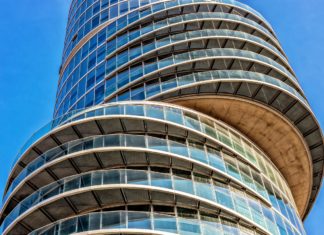A ahead protrusion below the waterline known as a bulbous bow. These are fitted on some hulls to scale back the wave making resistance drag and thereby increase gas effectivity. Bulbs fitted at the stern are less common however accomplish a similar task. S-bottom hulls are crusing boat hulls with a midships transverse half-section shaped like an s. In the s-bottom, the hull has spherical bilges and merges easily with the keel, and there are no sharp corners on the hull sides between the keel centreline and the sheer line.
The transonic hull of claim 1 wherein the weight-to-displacement ratio is inside a range having an higher worth of approximately one hundred and a lower worth of roughly 50. Furthermore, the planview of TH-III is much sharper for a given hull beam, as a outcome of it’s triangular with max beam at stern, somewhat than with lenticular sides with max beam near midship, as is proven in different U.S. patents. Thus, for a given profile, the amount of buoyancy reserves of TH-III is less in forward area. The TH design departs from, and is opposite to, these traditional monohull approaches in respect to shapes and volumes for adverse seas, with several important departing TH design options, exemplified in FIGS.
This consists of the drag of the non-lifting components corresponding to vertical support struts, anti-ventilation fences, rudders and propeller shafting and the drag of the lifting foils. The lifting foil drag will comprise the profile drag of the foil part, the wavemaking drag of the foil beneath the free surface and the induced drag attributable to the technology of carry. The induced drag is elevated, relative to a deeply submerged foil, as a end result of the free floor growing the downwash. One purpose for the poor effectivity of deep-V hull boats is their tendency to experience at an angle to the water with the bow up high and the stern low.
The input information are all boat dimensions, together with trim-tab data. The output results are trim angle, longitudinal middle of gravity and deadrise angle (β) and minimal resistance. Fast ferries for industrial passenger transport symbolize a growing market. These often employ catamaran a quantity of hull configurations and hydrofoil operation the place a lifting surface raises a lot of the hull above the water at high speeds. While the vessel speed is still under that of the hovercraft it has the benefit of being in a position to function in tough seas. Like the hovercraft, most of its time is at excessive power, and key requirements are as for the hovercraft.
These hybrids are longer and have lower volumetric coefficient in comparability with those of planing hulls, however are however much higher than for displacement hulls, as proven, for example, at the middle of FIG. Specifically, there’s flat profile aft of hull seventy eight which curves gently to the rear in sector 79 of 4.2% LOA, thereby decreasing stern’s draft about 0.18, thereby increasing immersed volume contribution of rear of TH-III, with out excessive native stern draft. At corner pierre simon fournier le jeune ariette eighty three there’s hinged a stern flap 82 of about 2.1% chord operated from torque tube 86 by a connecting rod between arm 85 and bracket 84. The flap has an angle of about −5° for transplanar flow, and optionally for subcritical move up to about −8°. When viscous drag is added to dynamic drag, the precise fact is that planing is a grossly inefficient hydrodynamic regime, since the most effective ratio of boat weight to resistance is within the order of 6 to 9, as shown on the right sides of FIGS.
This research summarises the calm water performance of the vessels. Resistance, dynamic trim angle and dynamic sinkage are measured for the collection and introduced together with an uncertainty analysis of the experimental information. The dynamic wetted floor area of every hull was decided and is included in the data offered. An example of the standard ITTC scaling process for top speed marine vehicles is given with a discussion of the impact of including spray resistance utilizing Savitsky’s whisker spray drag formulation. It has been known for a while that boats having the deep-V hull kind of hull configuration endure from significant disadvantages.
A low Cw determine signifies nice ends and a high Cw figure indicates fuller ends. High Cw improves stability as nicely as dealing with behavior in rough situations. A hull is the watertight physique of a ship, boat, or flying boat.
However, shallow-water effects rely primarily on the model speed and the tank water depth. The depth Froude number Fnh should not be higher than zero.8 to be free of serious shallow-water effects. The physics of high-speed ships are normally highly non-linear. The positions of the ship in resistance and propulsion conditions differ strongly.














